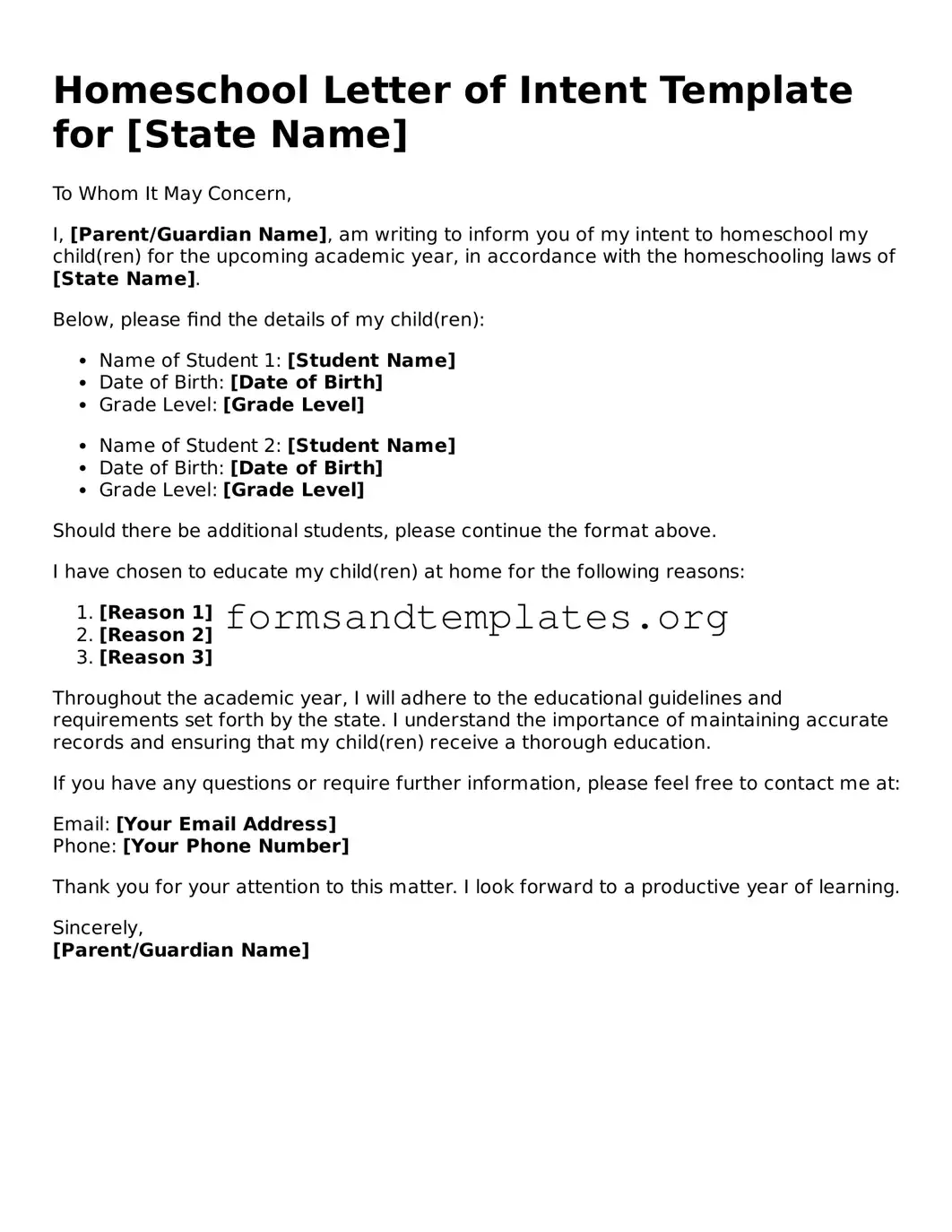Attorney-Verified Homeschool Letter of Intent Template
The Homeschool Letter of Intent is a formal document that parents or guardians submit to their local school district, indicating their decision to educate their children at home. This letter serves as a notification of intent and outlines the family's commitment to providing a structured educational environment. Understanding the importance of this form is essential for a smooth transition to homeschooling.
To begin your homeschooling journey, please fill out the Homeschool Letter of Intent form by clicking the button below.
Access Editor Here
